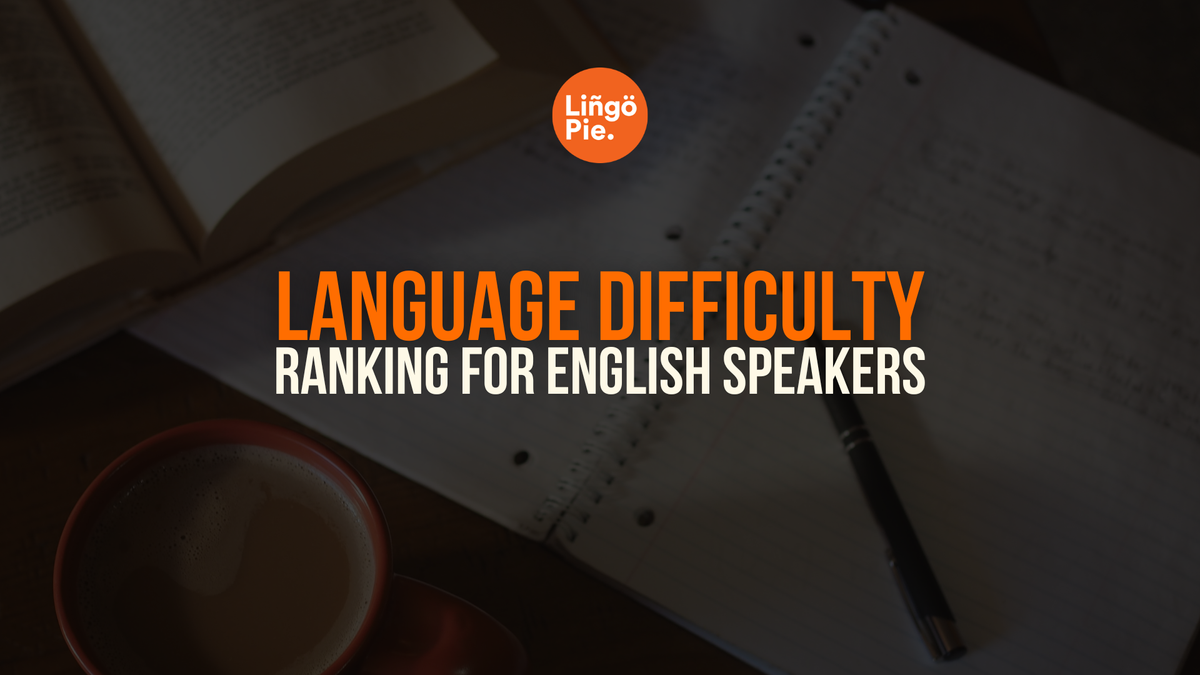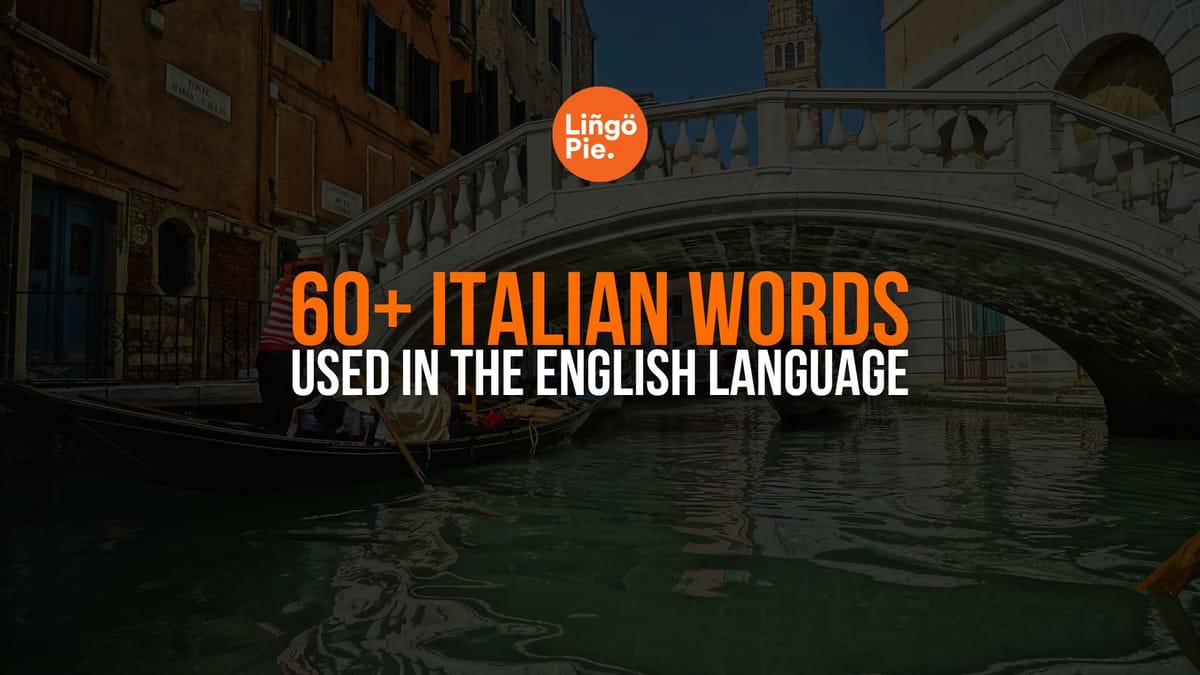Ever wondered why some people pick up Spanish in a few months while Japanese might take years? You're not alone. The question of which languages are easier or harder to learn is something we've all pondered at some point.
If you're planning your language learning strategy, knowing which languages will take more commitment can help you set realistic goals. That's exactly why we've put together this comprehensive guide on language difficulty rankings for English speakers in 2025.
- 20+ Easy Italian Short Stories To Learn The Language
- Swiss German And German Language: 5 Major Differences
- 11+ Best Shows On Netflix To Learn Korean

How We Ranked Language Difficulty
When ranking language difficulty, we couldn't ignore the gold standard: the Foreign Service Institute (FSI) classification system. This system, developed by the U.S. State Department to train diplomats, categorizes languages based on how long it takes a native English speaker to reach professional working proficiency.
But we didn't stop there. To validate and refine these rankings for 2025, we conducted a supplementary analysis that combined:
- Sentiment analysis of over 5,000 Reddit posts from language learning communities
- Data on completion rates from popular language learning platforms (including Lingopie data)
Our findings largely confirmed the FSI rankings with some minor variations based on modern learning tools and approaches. So, let's break down what we discovered.

Language Difficulty Rankings
Category I: Easiest Languages for English Speakers (23-24 weeks/575-600 hours)
These languages share significant similarities with English in terms of vocabulary, grammar, or cultural familiarity, making them the quickest to pick up for native English speakers. Most learners can reach professional proficiency in these languages within 6 months of intensive study.
| Language | Why It's Easier |
|---|---|
| Spanish | Consistent pronunciation rules and thousands of cognates make Spanish highly accessible for English speakers. |
| French | Despite some pronunciation challenges, French shares nearly 30% of its vocabulary with English. |
| Italian | Regular spelling patterns and familiar Latin-derived vocabulary create a smooth learning curve. |
| Portuguese | Slightly more challenging pronunciation than Spanish, but still offers familiar grammar structures. |
| Dutch | Its Germanic origins provide sentence structures and vocabulary that feel intuitive to English speakers. |
| Norwegian | Simplified grammar with minimal conjugation and familiar vocabulary make it surprisingly accessible. |
| Swedish | Clear grammatical rules and many English cognates help offset the challenge of new vowel sounds. |
| Danish | Despite difficult pronunciation, its grammar and vocabulary are closely related to English. |
| Romanian | Though it incorporates Slavic influences, its Latin roots provide many recognizable patterns. |
| Afrikaans | Minimal verb conjugation and simplified grammar make it the easiest Germanic language to learn. |
Category II: Languages with Moderate Difficulty (30 weeks/750 hours)
Category II languages introduce some new linguistic concepts but remain relatively manageable for English speakers. These languages typically require about 7-8 months of intensive study to reach professional working proficiency.
| Language | Key Challenge |
|---|---|
| German | The case system and compound words create complexity despite familiar vocabulary. |
| Haitian Creole | While structurally simple, its French-derived vocabulary has evolved uniquely over time. |
| Indonesian/Malaysian | Straightforward grammar is offset by vocabulary with few cognates to English. |
| Malay | Similar to Indonesian with logical grammar but requires learning entirely new vocabulary. |
| Swahili | The noun class system introduces a conceptual challenge despite using the Latin alphabet. |
| Finnish | Regular and phonetic but introduces extensive cases and agglutination not found in English. |
| Persian (Farsi) | Different script and verbal system require adjustment, though grammar is relatively straightforward. |
Category III: Languages with Significant Linguistic Differences (36 weeks/900 hours)
These languages introduce concepts that require English speakers to think differently about language structure. Typically requiring 9 months of intensive study, they present either complex grammar systems or unfamiliar writing systems.
| Language | Primary Difficulty |
|---|---|
| Russian | The Cyrillic alphabet and six-case system create a steep initial learning curve. |
| Greek | Different alphabet and grammar structure present notable challenges despite historical influence on English. |
| Turkish | The agglutinative structure creates words that function like entire English sentences. |
| Hebrew | Right-to-left reading and the absence of written vowels in many texts create unique challenges. |
| Hindi | The Devanagari script and retroflex consonants require significant practice for English speakers. |
| Thai | The tonal system and script with no spaces between words require developing new reading skills. |
| Polish | Complex consonant clusters and a seven-case system make pronunciation and grammar challenging. |
| Czech | Similar to Polish, with complex case systems and consonant-heavy words. |
| Icelandic | Preserved ancient Germanic grammar patterns make it considerably more complex than its Scandinavian relatives. |
| Ukrainian | Similar challenges to Russian but with some additional unique sounds and grammatical features. |
| Vietnamese | Six tones and unfamiliar vowel sounds create significant pronunciation hurdles. |
| Tagalog | The focus on verbs and affixes rather than word order requires a mental shift for English speakers. |
Category IV: The Hardest Languages to Master (88 weeks/2200 hours)
Category IV languages require the greatest time investment for English speakers, typically taking up to 2 years of intensive study to reach professional proficiency. These languages differ from English in almost every aspect—from writing systems to grammar structure and sound patterns.
| Language | Major Challenges |
|---|---|
| Mandarin Chinese | Tonal system, logographic writing with thousands of characters, and grammar with few parallels to English. |
| Cantonese | Even more tones than Mandarin and fewer learning resources make it especially challenging. |
| Japanese | Complex writing system with three scripts (hiragana, katakana, and thousands of kanji) combined with significantly different grammar. |
| Korean | Though the hangul alphabet is logical, Korean grammar has virtually no similarities to English structure. |
| Arabic | Right-to-left cursive script, unwritten vowels, and varying dialects create multiple learning challenges. |
| Albanian | Unusual grammar structures and limited learning resources make progress slower than with more commonly studied languages. |
| Amharic | Unique script with 33 consonants each with seven forms and a grammar system with little resemblance to European languages. |
| Hungarian | Extensive case system (18 cases) and agglutinative grammar create sentences structured unlike anything in English. |
| Mongolian | Vowel harmony and a unique vertical script create significant barriers for English speakers. |
| Navajo | Complex verb system and sounds not found in Indo-European languages make it exceptionally challenging. |

Factors That Influence Language Learning Difficulty
Our research identified several key factors that determine how difficult a language will be for English speakers:
1. Linguistic Distance
Languages that share roots with English (Germanic and Romance languages) naturally feel more familiar. Our brain recognizes patterns and vocabulary more easily when they resemble our native language.
2. Writing System
Languages using the Latin alphabet give learners a head start, while those with entirely different writing systems (like Chinese characters or Arabic script) add hundreds of hours to the learning process.
3. Phonology
New sounds or distinctions not present in English (like tones in Chinese or Thai) create significant challenges. Our analysis shows pronunciation is consistently cited as the biggest hurdle in Category III and IV languages.
4. Grammatical Complexity
Languages with cases, extensive verb conjugations, or sentence structures radically different from English require more time to internalize. German's four cases pale in comparison to Finnish's 15 cases, explaining why the latter requires substantially more study time.
5. Cultural Familiarity
An often overlooked factor is cultural exposure. Languages from cultures frequently represented in English-language media (like Spanish or French) have an advantage over those with less exposure (like Mongolian or Amharic).
How to Use These Rankings to Plan Your Language Learning Journey
These rankings aren't meant to discourage you from tackling a Category IV language—they're designed to help you set realistic expectations:
- For time-limited goals: If you need basic communication skills within 3-6 months, Category I languages will give you the most return on your time investment.
- For long-term passion projects: If you're fascinated by Japanese culture or Chinese history, don't let the difficulty rating deter you—just plan for a longer journey.
- For academic purposes: Consider that reading proficiency might come faster in some languages than speaking proficiency, or vice versa, depending on your needs.
- For balanced language portfolios: Many polyglots recommend learning one easier language before tackling a more difficult one, building your language learning skills progressively.
Based on our analysis of thousands of language learners' experiences, the best language to learn isn't necessarily the easiest one—it's the one you're most motivated to practice every day.
Overcome Any Language's Difficulty with Lingopie
No matter which language you choose from our rankings, Lingopie makes the journey not just faster, but genuinely enjoyable. Because when you're binge-watching a great show in your target language and suddenly realize you're understanding without the subtitles, that's when real learning happens.
Ready to experience the difference for yourself? Start your language learning journey with Lingopie today and discover why difficulty rankings become far less intimidating when you're learning the way your brain was designed to: through genuine engagement with content you love.







![Language Learning with Netflix [2025 Guide]](/blog/content/images/size/w300/2023/05/Netflix-AD.jpg)


